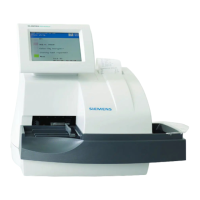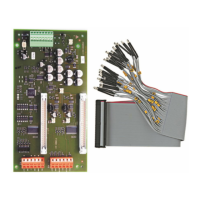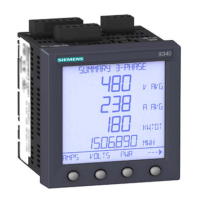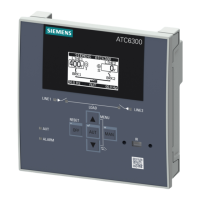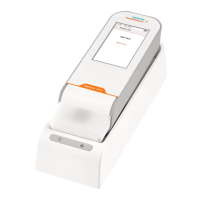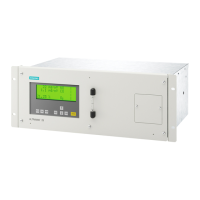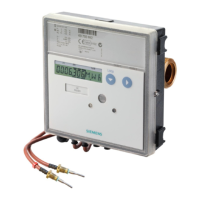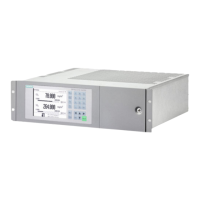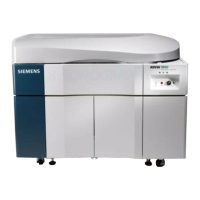
Do you have a question about the Siemens ADVIA 1800 and is the answer not in the manual?
| Throughput | Up to 1, 800 tests per hour |
|---|---|
| Number of Reagents | 60 |
| Calibration | Automatic calibration |
| Sample Capacity | Up to 120 samples |
| Sample Types | Serum, Plasma, Urine |
| ISE Module | Optional ISE module available |
| Power Requirements | 100-240 VAC, 50/60 Hz |
| Connectivity | LIS |
| Type | Clinical Chemistry Analyzer |
| System Type | Automated, Random Access |
| Reagent Capacity | Up to 60 reagents |
Provides an overview of the system's software interface and functions.
Details the Operation Panel's buttons and status indicators.
Describes the Menu Panel and its access to other menus and functions.
Provides functions for viewing, searching, deleting, printing, and exporting sample log entries.
Explains how to monitor sample processing status during analysis.
Allows review of sample results, configuration of reruns, and printing.
How to observe changes in reaction data over time.
How to view and print new calibration, control, and patient sample results.
How to disable tests for analysis or calibration.
Module for converting patient, control, and QC results reports.
Accesses calibration-related windows like View Calibration Curve.
How to select samples for analysis and disable specific samples.
How to enter information for calibrating photometric tests.
Provides access to various maintenance-related windows.
How to perform various ISE operations and tasks.
How to monitor and verify ISE calibration data over time.
Lists tasks that can be performed in Manual Operation mode.
How to monitor system and host computer data exchange.
How to review system status and error messages.
How to check liquid level sensor waveforms for probes.
How to troubleshoot LAS interface issues.
Provides access to reagent inventory and management functions.
Provides access to ADVIA QC and Real-time QC windows.
How to view daily control results and associated charts.
Covers system startup, logging on, and initial operational steps.
Lists components to inspect for routine analyzer maintenance.
Covers daily operational tasks including workorders and sample loading.
Step-by-step guide for loading patient samples onto the STT.
Procedures for initiating system runs, including calibrators and controls.
Procedures for running STAT samples during active or paused sampling.
How to initiate the system shutdown process.
Procedures for emergency stops, shutdowns, and recovery.
Covers calibration overview, setup, and execution.
Steps to calibrate a multi-standard method.
How to request and perform a calibration run.
Covers quality control overview, setup, and sample running.
Provides a schedule and procedures for system maintenance.
Procedures for daily inspection and cleaning of system components.
Procedures for performing weekly maintenance tasks.
Procedures for monthly maintenance tasks.
How to prime fluid lines after refilling the dilution bottle.
How to prime fluid lines after refilling the cuvette wash bottle.
Procedures for replacing sample and reagent probes.
Procedures for replacing DPP probes with crash detection.
Procedures for replacing Na, K, and Cl electrodes.
How to assemble new electrodes correctly.
How to initialize and execute ISE calibration.
How to prepare a dilution for conditioning electrodes.
How to clean the dilution bowl.
Guidance on resolving system error messages and common issues.
Procedures for managing system files, logs, and data.
How to save test data from the User Maintenance window.
How to make selections in the Create Data File dialog box.
How to create a data archive from User Maintenance.
Covers system setup, connectivity, and monitor configuration.
Provides essential safety information and hazard warnings.
Details of the instrument warranty and service policies.
Table listing customer replaceable parts with details.
Comprehensive specifications for the ADVIA 1800 System.
Explanations of warning, caution, and operational symbols.
Defines alarm and result flags used by the system.
